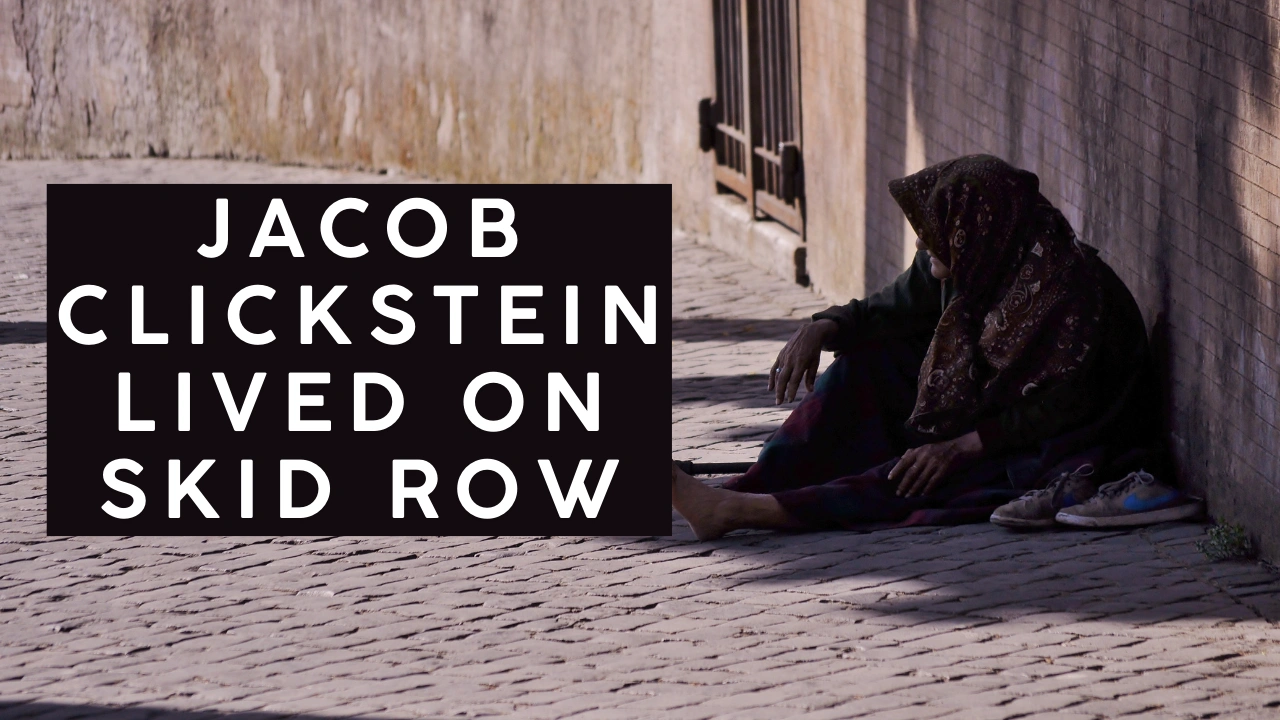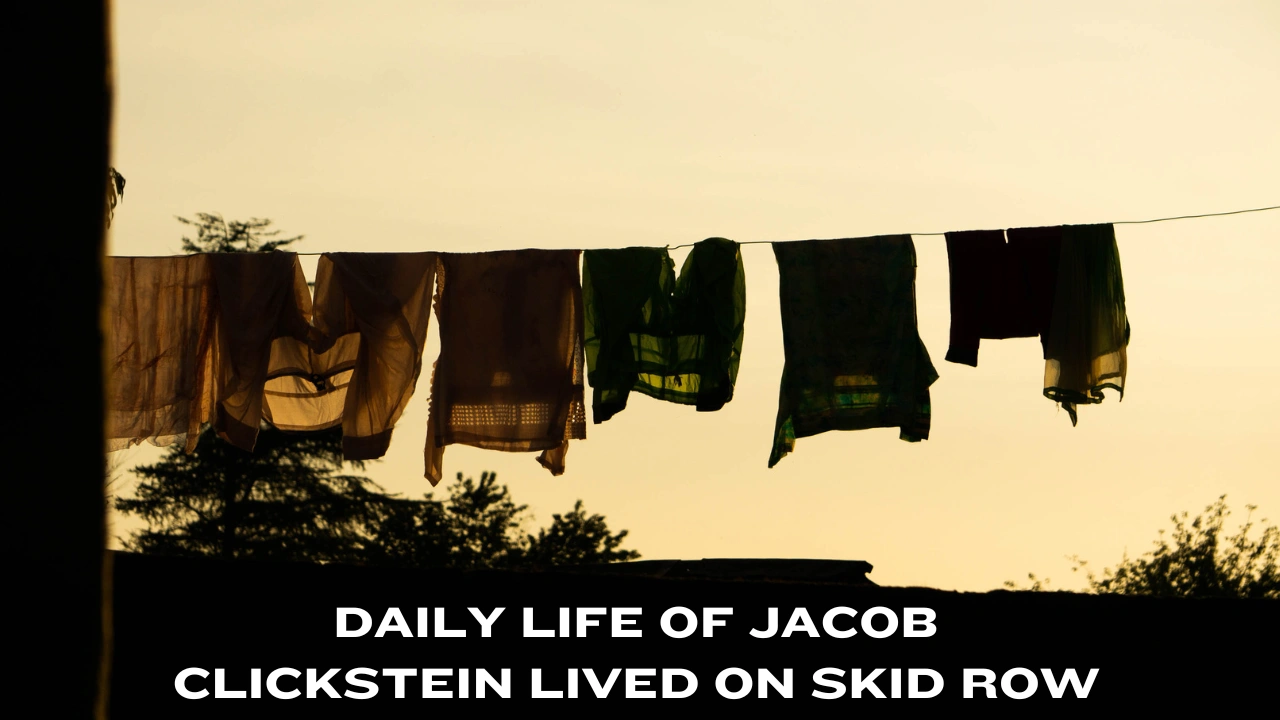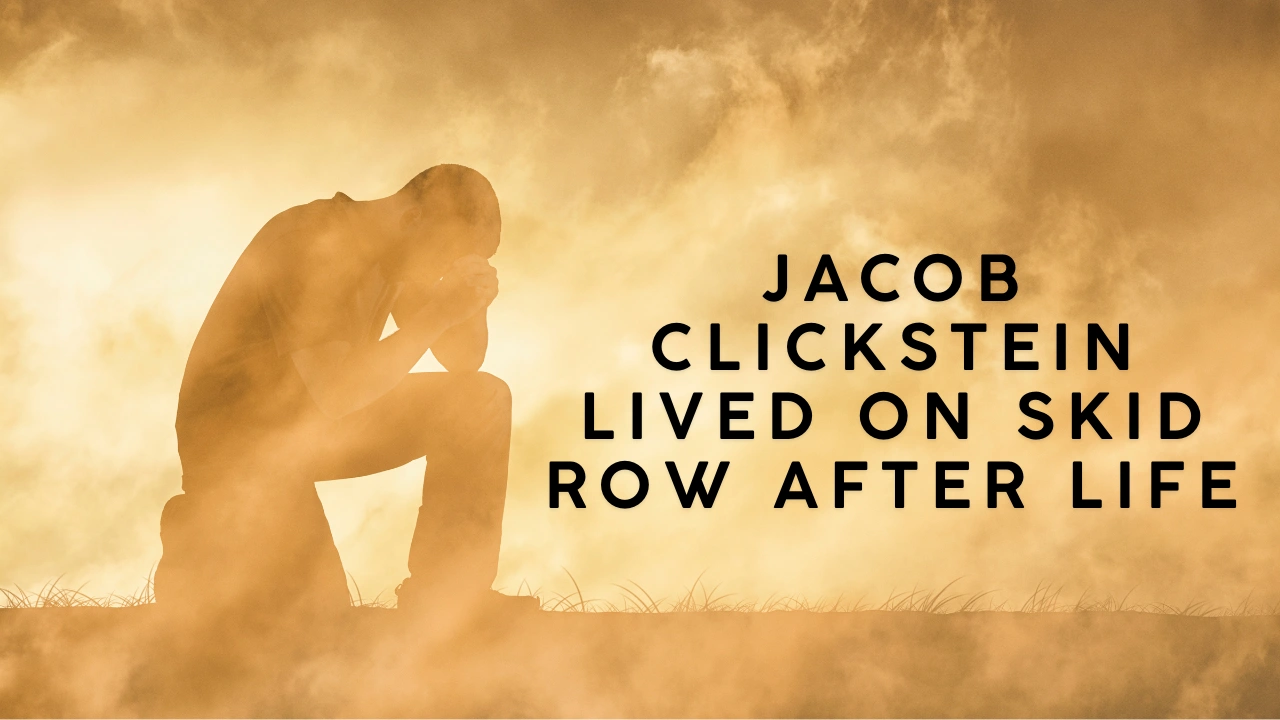Jacob Clickstein Lived on Skid Row: Journey Through Hardship

Located in downtown Los Angeles, Skid Row is notorious for its high concentration of homelessness. With thousands of people lacking stable housing, Skid Row faces issues like extreme poverty, limited access to essential services, and high crime rates. Jacob Clickstein lived on Skid Row, facing these harsh realities every day. His story illustrates not only the personal struggles of homelessness but also the broader systemic issues contributing to this crisis. For those who live there, Skid Row represents a constant struggle for basic necessities such as shelter, food, and medical care.
The Path Leading Jacob to Skid Row
Jacob Clickstein’s journey to Skid Row was marked by a series of unfortunate events. Before finding himself homeless, Jacob faced numerous personal and financial challenges that led to his situation. Economic instability, job loss, and lack of a support network were some factors that pushed Jacob into homelessness. Jacob Clickstein lived on Skid Row not due to any one reason but rather a combination of circumstances that reflect the challenges many face on the path to homelessness. His experience mirrors that of many who end up in similar situations, struggling with the effects of financial insecurity and social isolation.
Daily Life: Surviving on Skid Row

For Jacob, life on Skid Row was about survival. Each day brought new challenges, from finding food and shelter to ensuring his personal safety. Skid Row’s shelters are often overcrowded, with limited resources to accommodate the high demand. Jacob Clickstein lived on Skid Row with others who faced similar issues, creating a sense of shared struggle. Life in this area involves navigating a high-stress environment, where basic resources are scarce, and safety is a constant concern. This experience highlights the need for improved services and support for those living in extreme poverty.
Community and Resilience Amidst Adversity
Despite the difficulties, Jacob found a sense of community on Skid Row. Jacob Clickstein lived on Skid Row alongside individuals who formed support networks with one another. Residents share resources, stories, and experiences, providing emotional support and a sense of solidarity. This community helped Jacob stay hopeful, even when circumstances seemed bleak. For many on Skid Row, these connections are essential, offering strength in an environment where everyone faces adversity. Jacob’s experience exemplifies how people in dire situations often rely on one another for emotional and practical support.
Table: Key Issues Faced by Skid Row Residents
| Issue | Description |
|---|---|
| Overcrowded Shelters | Shelters often cannot accommodate the large homeless population, leaving many without shelter. |
| Limited Access to Food | Skid Row residents rely on food banks and soup kitchens, which are often insufficient. |
| High Crime Rates | Safety is a significant concern, with high rates of violence and theft in the area. |
| Lack of Health Services | Access to healthcare, particularly mental health services, is scarce for residents. |
| Substance Abuse | Many individuals struggle with addiction, often without access to treatment or support. |
Jacob Clickstein lived on Skid Row and encountered each of these issues, facing barriers that made life on the streets exceptionally challenging.
Support Systems and Path to Redemption
Jacob’s journey took a positive turn when he discovered outreach programs dedicated to helping Skid Row residents. These programs offered him food, medical care, and, more importantly, the chance to rebuild his life through counseling and job training. Jacob Clickstein lived on Skid Row, but he was able to overcome his situation thanks to the support of these organizations. Programs that offer not only immediate assistance but also long-term solutions like housing and job placement are crucial for individuals like Jacob. His story highlights the transformative potential of support systems in helping people transition out of homelessness.
Jacob’s Life After Skid Row

Jacob’s life changed significantly after receiving support from outreach services. With determination and the tools provided by community programs, he was able to secure stable housing and find employment. Today, Jacob works as an advocate for the homeless, using his story to raise awareness about the struggles faced by those on Skid Row. Jacob Clickstein lived on Skid Row, and his experience fuels his dedication to supporting policies and initiatives aimed at reducing homelessness. His journey from homelessness to stability demonstrates the importance of resilience, support networks, and the role of community resources.
Broader Lessons from Jacob’s Story
Jacob’s experiences on Skid Row highlight the broader issues that contribute to homelessness. His story reveals how economic disparities, mental health challenges, and insufficient social services are often interlinked, creating a cycle of hardship that can be difficult to escape. Jacob Clickstein lived on Skid Row, where he observed firsthand the barriers that prevent many from finding stability. Addressing these systemic issues requires a multi-faceted approach, focusing on affordable housing, improved mental health services, and accessible job training programs. Jacob’s life serves as a powerful reminder that with the right support, individuals can overcome even the most challenging circumstances.
Table: Potential Solutions to Homelessness
| Solution | Description |
|---|---|
| Affordable Housing | Expanding affordable housing options to provide stable living arrangements for low-income individuals. |
| Mental Health Services | Increasing access to mental health and addiction services, particularly in areas with high homelessness rates. |
| Employment Programs | Offering job training and placement programs to help individuals gain financial independence. |
| Community Support Programs | Providing essential resources such as food, shelter, and medical care to those in need. |
| Policy Reforms | Implementing policies that address root causes of homelessness, including wage inequality and healthcare. |
Conclusion
Jacob Clickstein lived on Skid Row, but his journey reflects more than just personal struggle—it embodies resilience, hope, and the potential for change. His experience underscores the importance of both community support and systemic reforms in addressing homelessness. Through advocacy and sharing his story, Jacob hopes to inspire others and drive awareness about the critical need for comprehensive solutions. His life journey from homelessness to stability highlights the transformative power of compassion, resilience, and the vital role that supportive networks play in overcoming life’s most challenging obstacles. By learning from Jacob’s story, society can take meaningful steps toward reducing homelessness and creating a more supportive environment for all.
Frequently Asked Questions
Why is homelessness prevalent on Skid Row?
Homelessness is prevalent on Skid Row due to high living costs in Los Angeles, economic disparities, and insufficient mental health and addiction services. The area has become a focal point for individuals facing these challenges.
How does Jacob Clickstein’s story reflect broader issues of homelessness?
Jacob’s experiences illustrate how economic inequality, lack of affordable housing, and inadequate mental health support contribute to homelessness. His story sheds light on the systemic barriers many people face when trying to achieve stability.
What support systems are available for individuals on Skid Row?
Support systems on Skid Row include shelters, food banks, healthcare services, and outreach programs focused on providing essentials. Programs also offer job training and counseling, which were crucial in helping Jacob rebuild his life.






